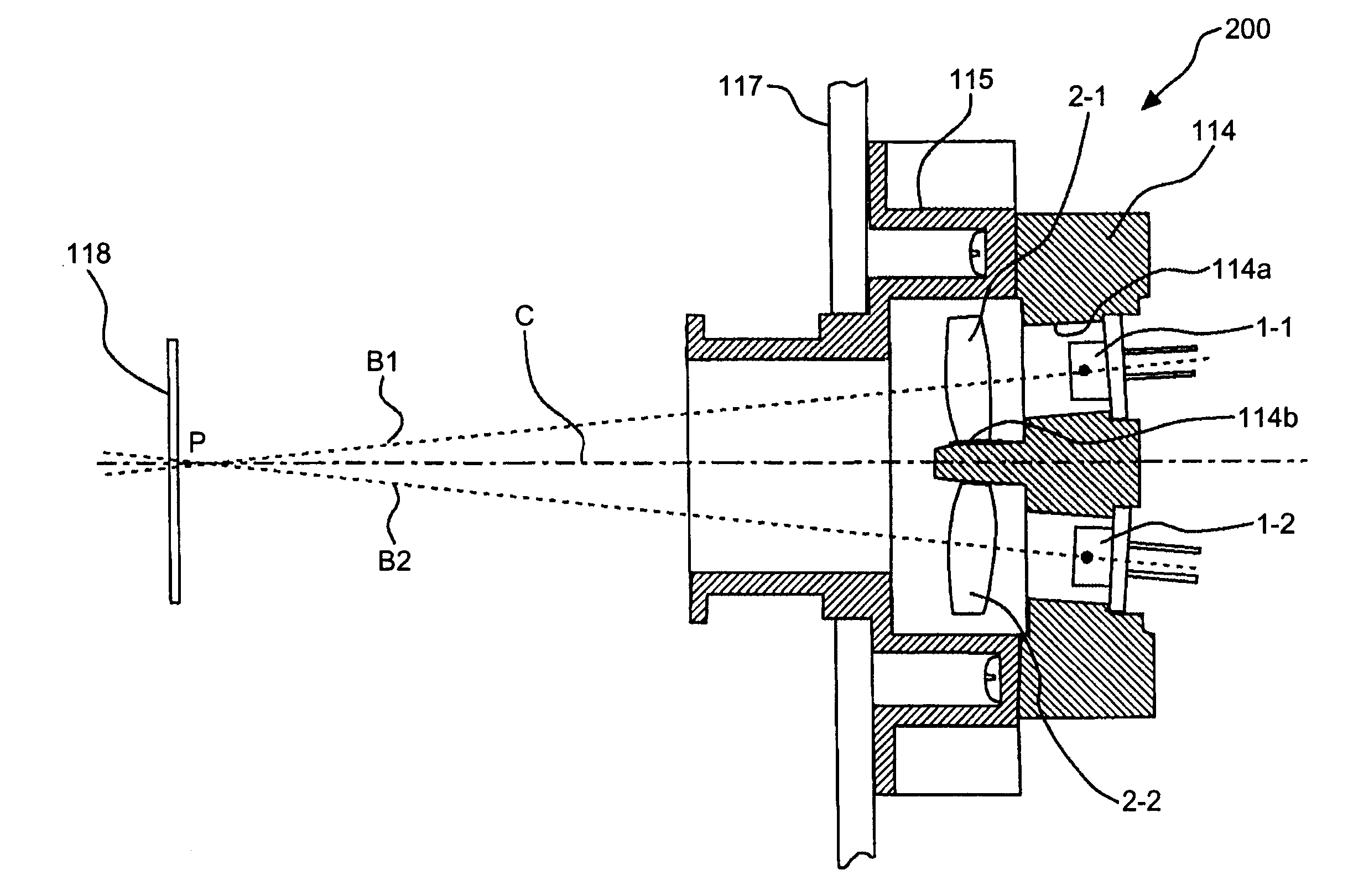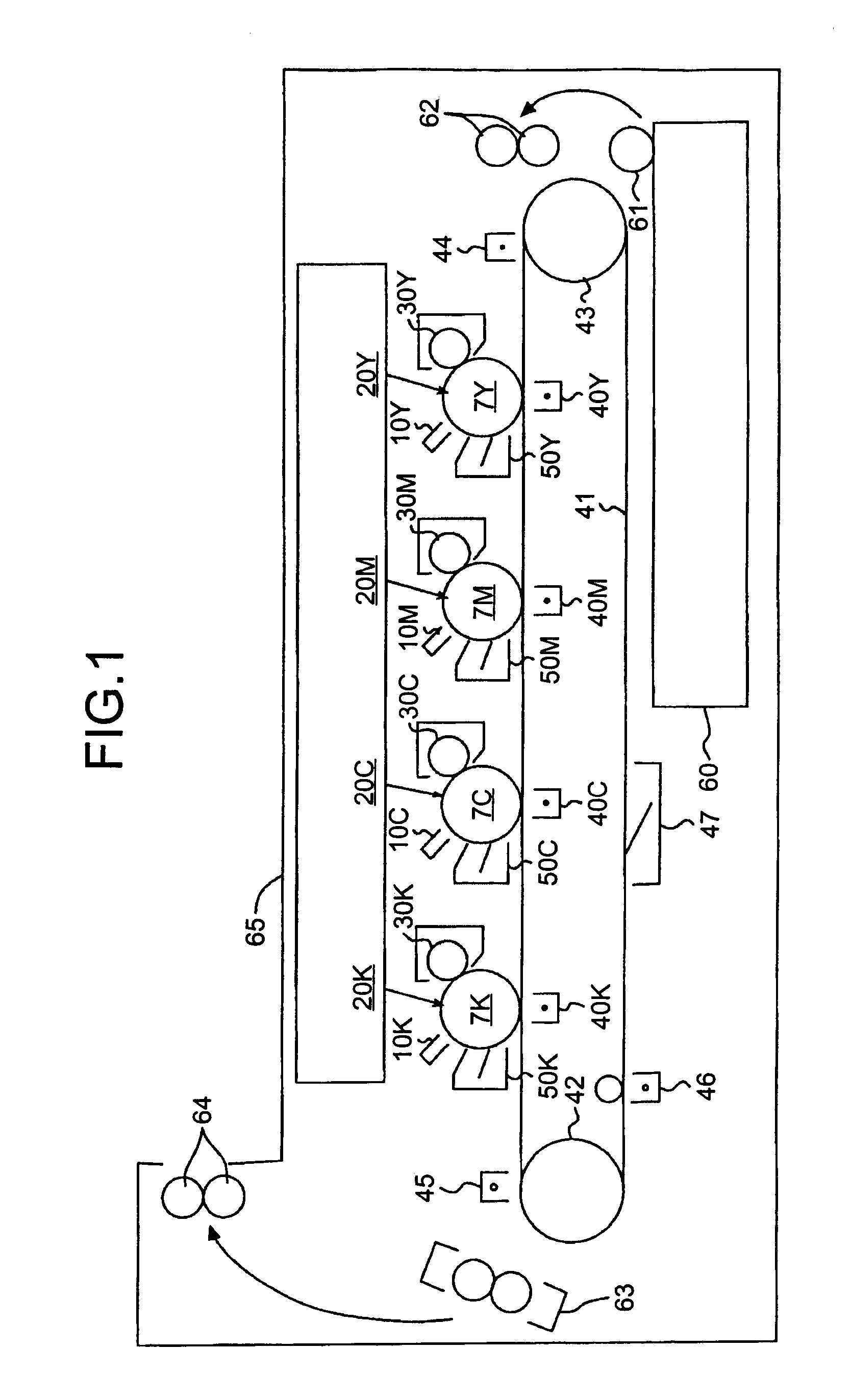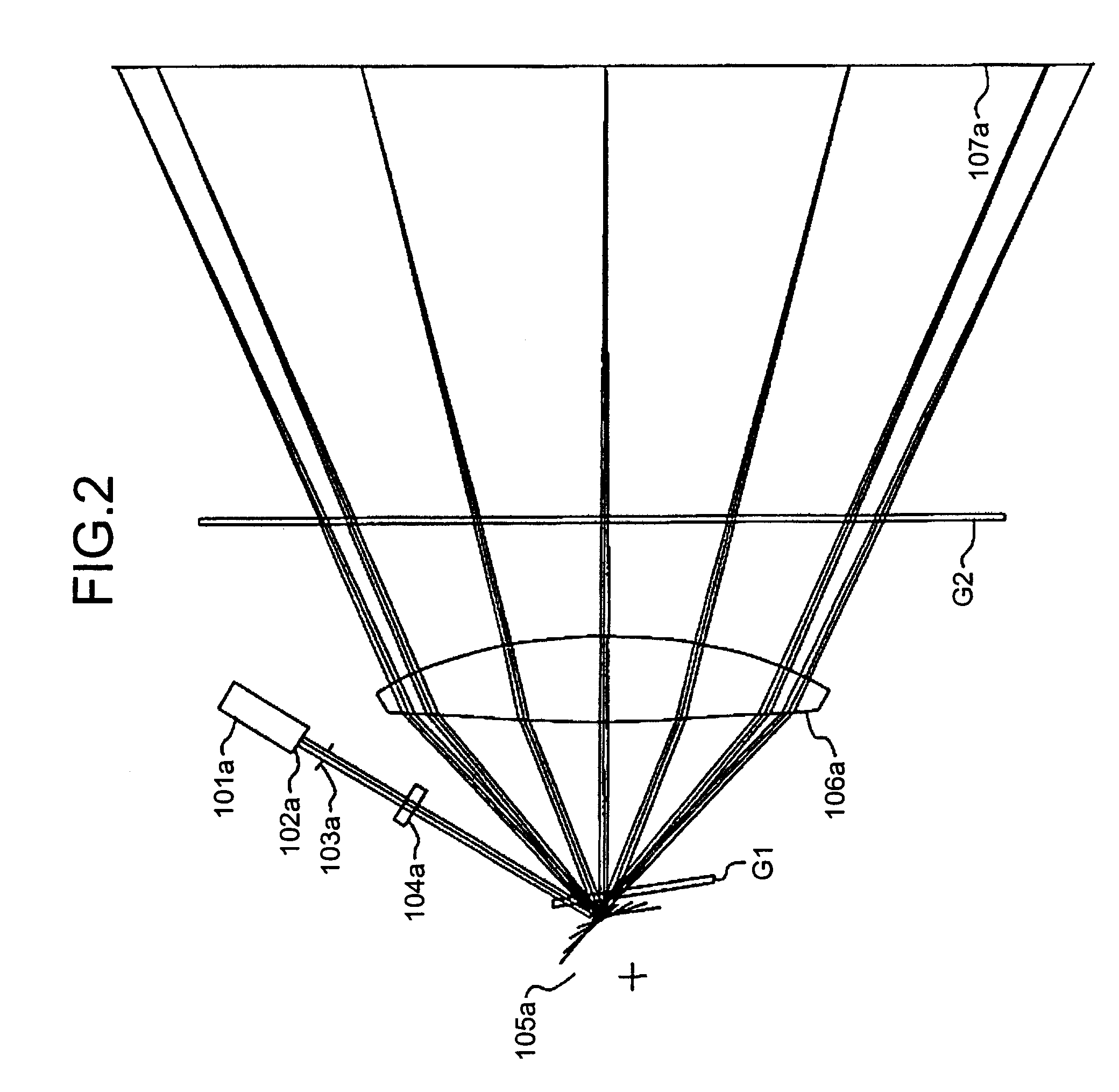Optical scanning device, optical writing device, and image forming apparatus
a scanning device and optical writing technology, applied in the field of optical scanning devices, optical writing devices, image forming apparatuses, can solve the problems of increasing power consumption and noise, heat generation, and reducing the durability of optical components, and thereby increasing the diameter
- Summary
- Abstract
- Description
- Claims
- Application Information
AI Technical Summary
Benefits of technology
Problems solved by technology
Method used
Image
Examples
first embodiment
[0064] The optical scanning device explained later is used for the image forming apparatus having the configuration and operations, and it is thereby possible to obtain a stable beam-spot diameter at any time and implement a compact and low-cost image forming apparatus suitable for high-resolution printing.
[0065] The configuration, operation, and functional effect of the optical scanning device according to the first embodiment are explained in detail below.
[0066] The optical scanning device according to the first embodiment includes a first optical system for guiding light beams emitted from a plurality of light emitting units to an optical deflector, and a second optical system for collecting the light beams deflected by the optical deflector onto the surface to be scanned to form a light spot and for optically scanning the surface to be scanned. The optical scanning device has characteristics as follows.
[0067] More specifically, at least one of the first optical system and the...
second embodiment
[0175] The configuration, operation, and functional effect of an optical scanning device are explained in detail below with reference to the accompanying drawings.
[0176]FIG. 11 is an example of a basic configuration of the optical scanning device according to the second embodiment. In FIG. 11, an optical system forming the optical scanning device is developed on a plane (called “main-scanning plane” or “main-scanning cross section”) passing through the optical axis and parallel to the main scanning direction (a deflecting / scanning direction by a deflecting unit).
[0177] As shown in FIG. 11, the optical system includes light source units (semiconductor lasers) 101b and 101c, coupling lenses (first lenses) 102b and 102c, an aperture (aperture stop) 103b, an anamorphic lens (second lens) 104b, a polygon mirror 105b of a deflector (polygon scanner) which is a deflecting unit (only one deflection facet of the polygon mirror is shown in FIG. 11), a scanning lens 106b, an image-plane-side...
third embodiment
[0239] Although the scanning optical system in FIG. 15 is formed with only one scanning lens 106c, even if a plurality of scanning lenses are used, the same effect of the third embodiment is obtained. A deflected light flux is reflected by a synchronization mirror 122 before optical scanning each time the deflected light fluxes optically scan the photosensitive element 7, and the reflected light is collected to a synchronization detector 124 in the main scanning direction by a synchronization lens 123. The synchronization detector 124 receives the reflected light to output a detection signal, and a write-start timing for optical scanning is determined based on the output signal.
[0240] The “spot diameter of a light spot” in this specification is defined as 1 / e2 intensity in a line spread function of a light intensity distribution in the light spot on the surface to be scanned. The “line spread function” is defined as follows. When a light intensity distribution of a light spot f(Y, Z...
PUM
 Login to View More
Login to View More Abstract
Description
Claims
Application Information
 Login to View More
Login to View More - R&D
- Intellectual Property
- Life Sciences
- Materials
- Tech Scout
- Unparalleled Data Quality
- Higher Quality Content
- 60% Fewer Hallucinations
Browse by: Latest US Patents, China's latest patents, Technical Efficacy Thesaurus, Application Domain, Technology Topic, Popular Technical Reports.
© 2025 PatSnap. All rights reserved.Legal|Privacy policy|Modern Slavery Act Transparency Statement|Sitemap|About US| Contact US: help@patsnap.com



